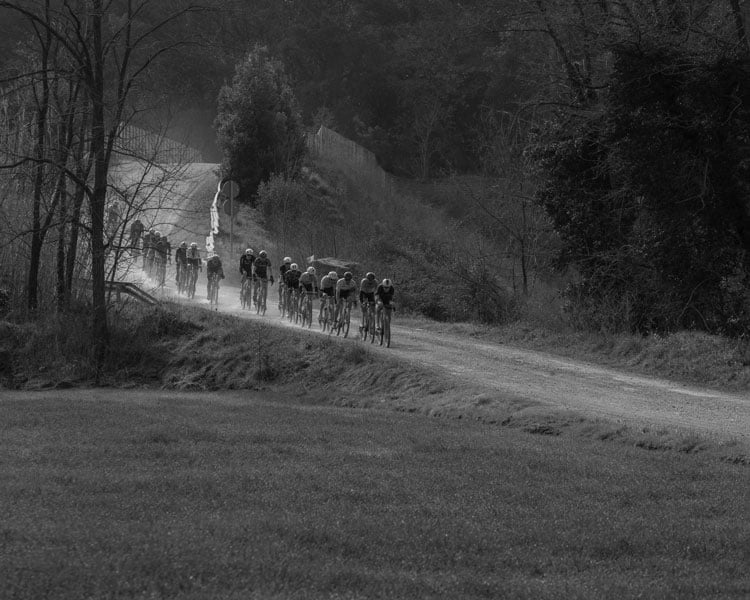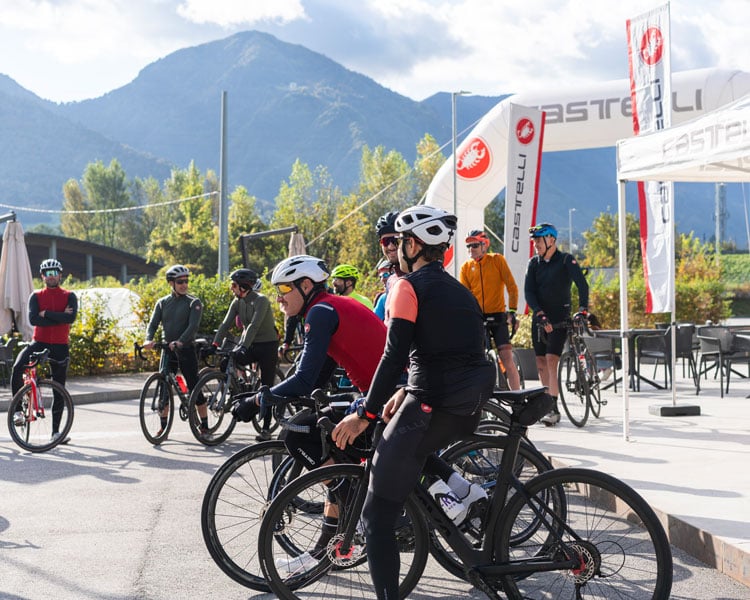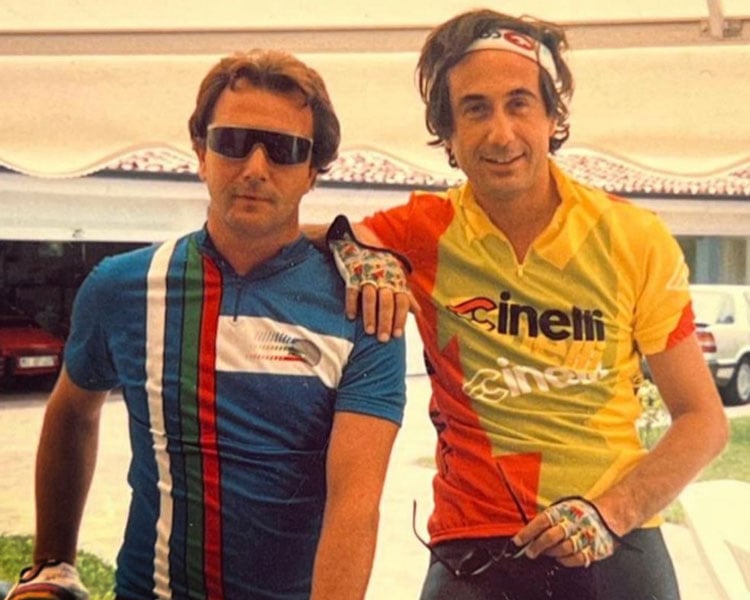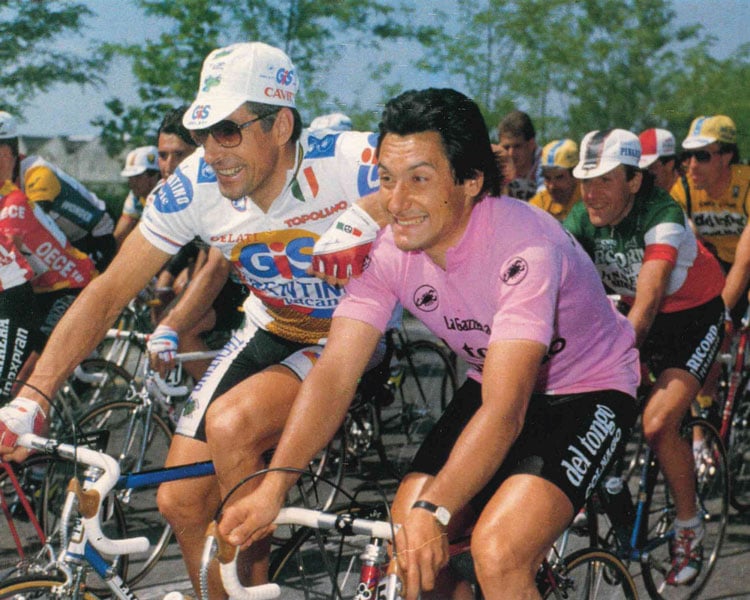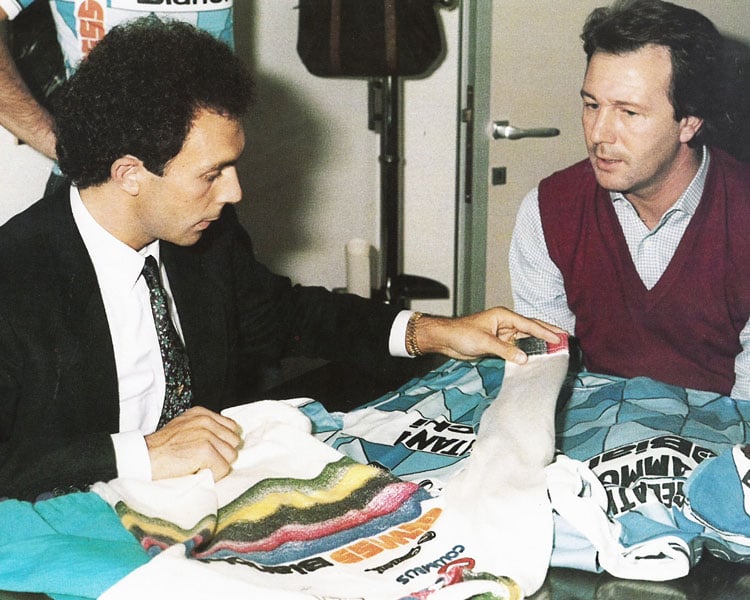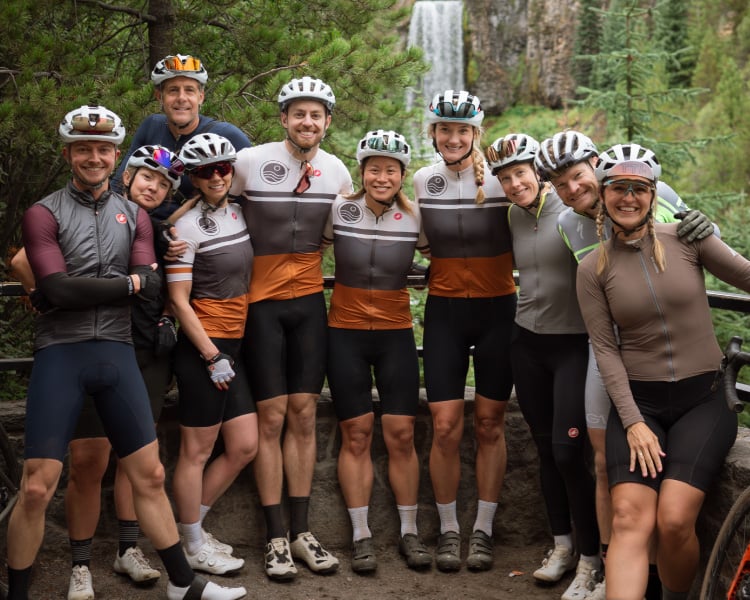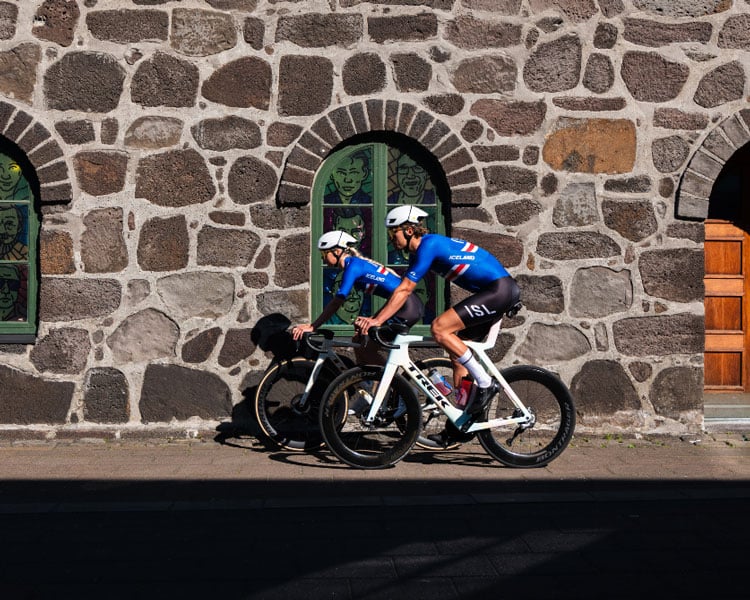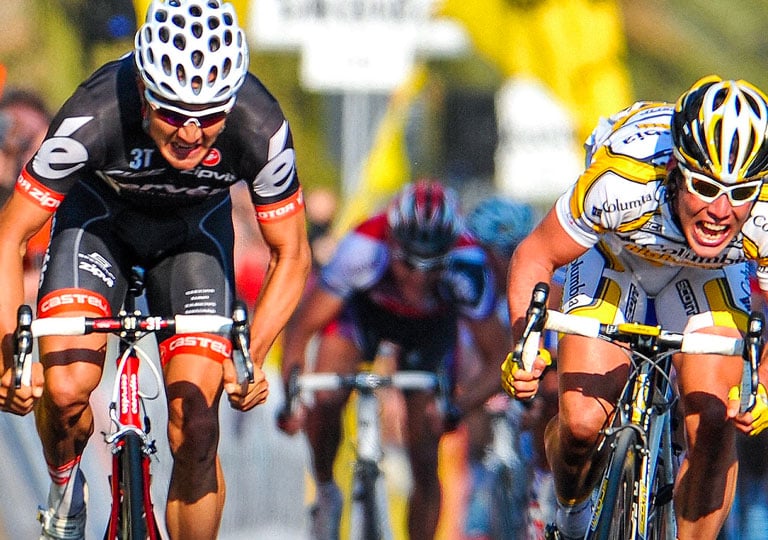
MILANO-SANREMO
A LONG HISTORY OF INNOVATION AND CYCLING INDUSTRY FIRSTS
It’s hard to imagine a time when speed suits and Gabbas and aero helmets weren’t the norm, but for this first Castelli first, at Milano-Sanremo, we go back 45 years to 1977 – when wool was king, downtube shifters reigned supreme, and what was a helmet anyway?
It was this edition of La Primavera that saw a world first: the Lycra bib short. Maurizio Castelli’s new product was made specifically for the sponsored pros racing in that year’s editions of Milano-Sanremo. It was the first time anyone had used Lycra shorts for cycling, and it was that moment when wool shorts were made obsolete.
It was this edition of La Primavera that saw a world first: the Lycra bib short. Maurizio Castelli’s new product was made specifically for the sponsored pros racing in that year’s editions of Milano-Sanremo. It was the first time anyone had used Lycra shorts for cycling, and it was that moment when wool shorts were made obsolete.
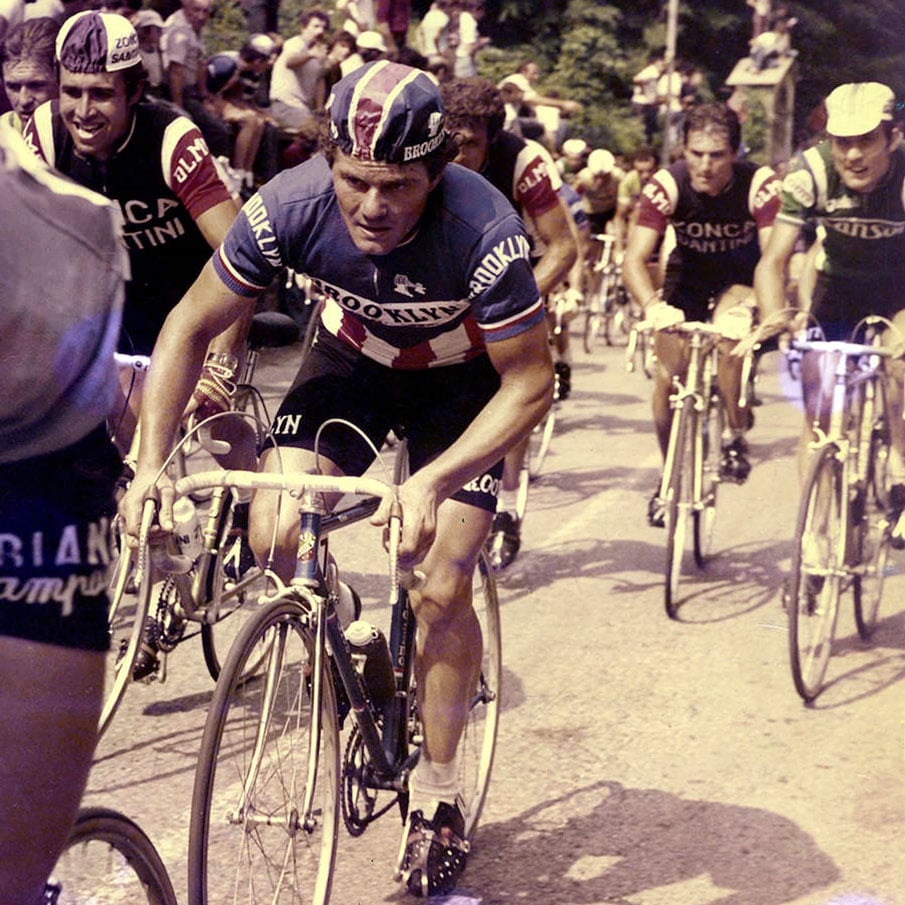
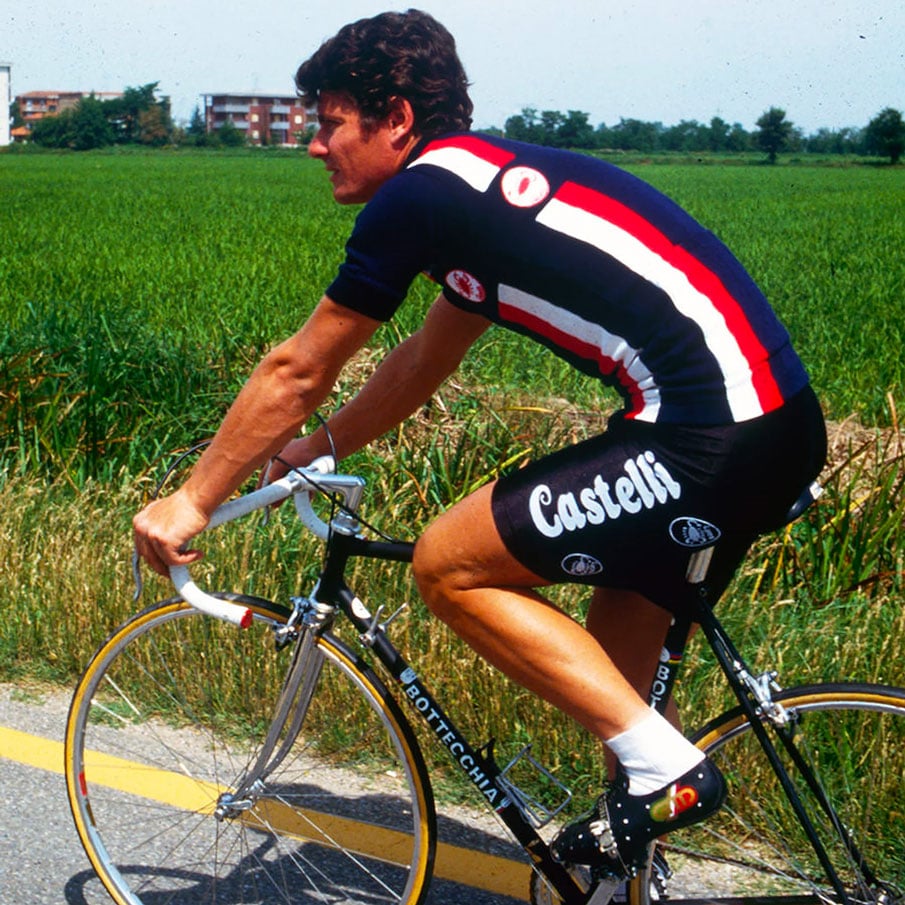
In the days following the debut of the Lycra bib short, team soigneurs and even some directors lined up in front of the Castelli factory to buy this new wonder short. None were available, though, as Maurizio Castelli had only produced as many as were needed to supply the teams he was sponsoring. He always had the mindset that the pros came first and hardly spared a thought about preparing his new short for the public.
FROM LOSING TO WINNING IN 1CM
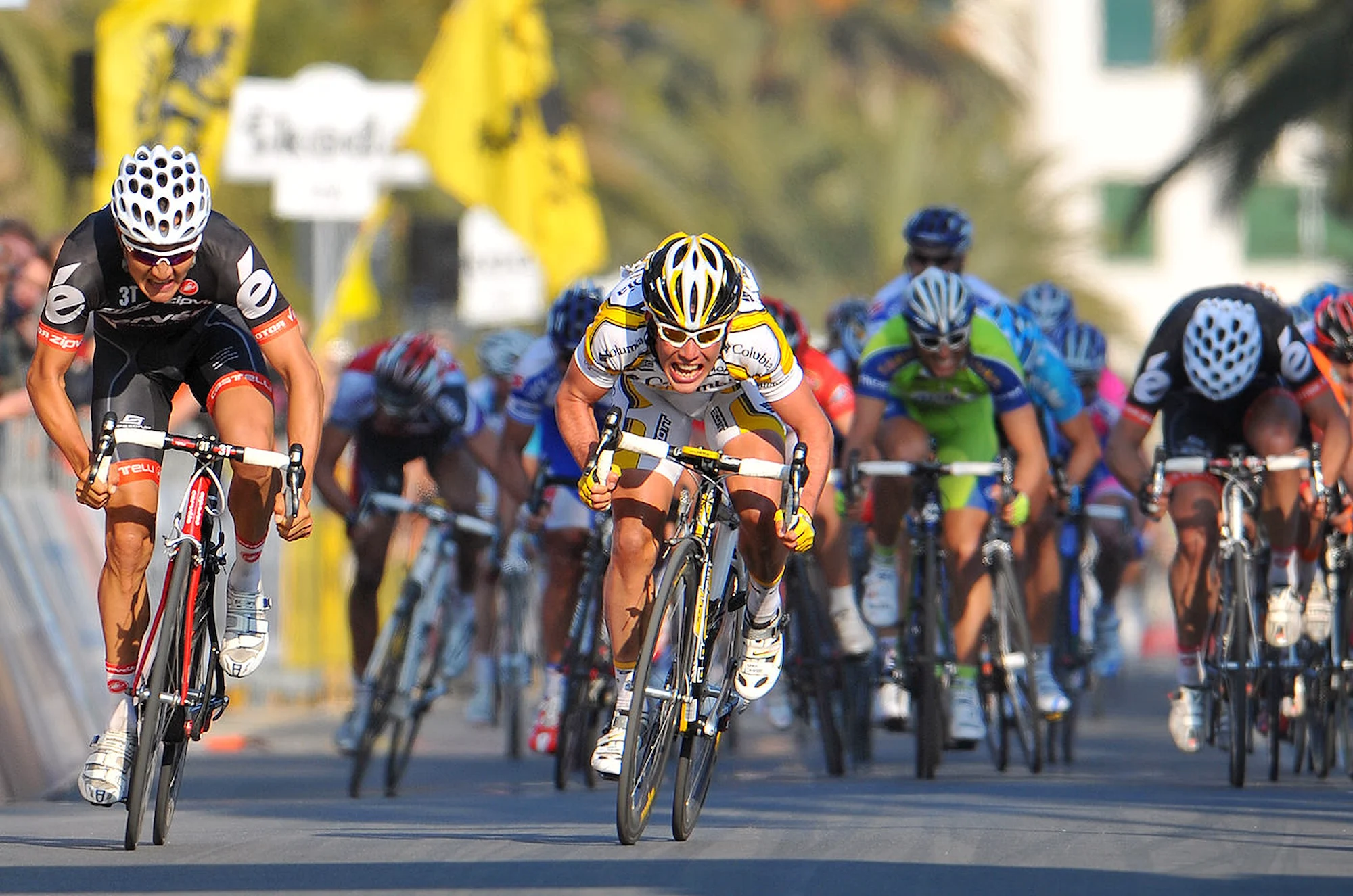
In 2009, Heinrich Haussler came within a centimeter of winning Milano-Sanremo after a seemingly perfect sprint. He launched early and got a massive jump on the select group sprint. In any other year, Haussler would have raised his hands in ecstasy if it hadn’t been for one of the greatest sprints in modern cycling history by arguably the greatest sprinter in modern cycling, Mark Cavendish. But still, the loss was a bitter one for Haussler, his team, and Castelli.
It was in the aftermath of this that the Sanremo Speed Suit was born. Immediately, the question was asked: what could Castelli create that could make up that final centimeter – and maybe change history in the future? The concept of a practical skinsuit with pockets – but with a full front zipper opening that gave all the comfort of the normal jersey/shorts combo – was the solution.
It was in the aftermath of this that the Sanremo Speed Suit was born. Immediately, the question was asked: what could Castelli create that could make up that final centimeter – and maybe change history in the future? The concept of a practical skinsuit with pockets – but with a full front zipper opening that gave all the comfort of the normal jersey/shorts combo – was the solution.
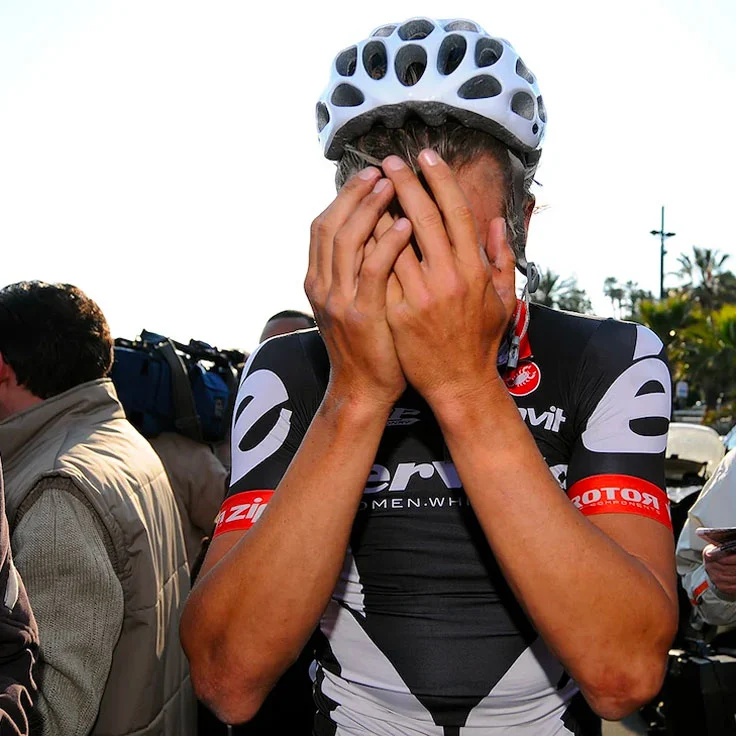
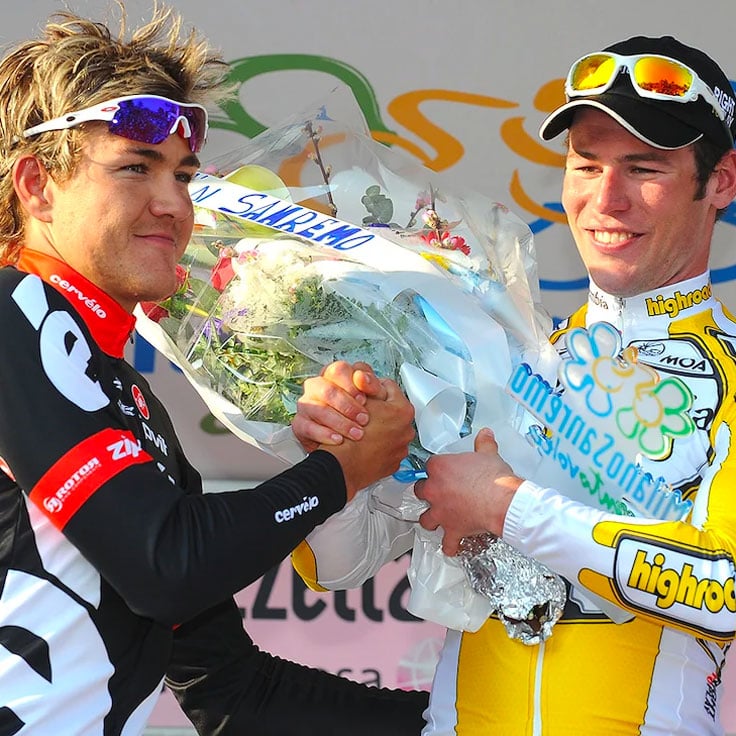
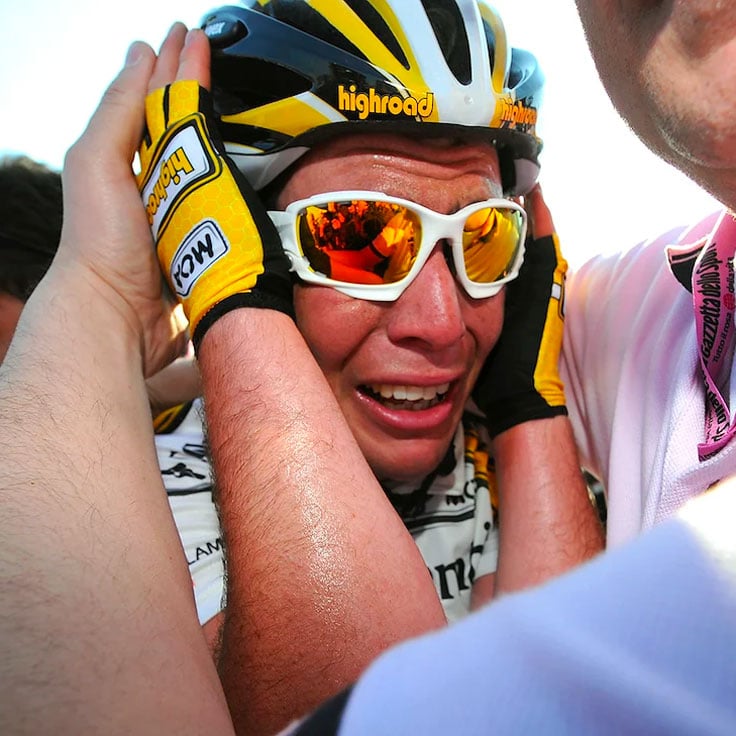
On another bright, warm late afternoon in Sanremo, eight years later, three riders came to the line: a young Julian Alaphilippe, on the doorstep of becoming one of the world’s best in the coming years; the reigning world champion, many times over green jersey winner, and best one-day bike racer in the world at that time, Peter Sagan; and former world champion and Strade Bianche winner Michal Kwiatkowski.
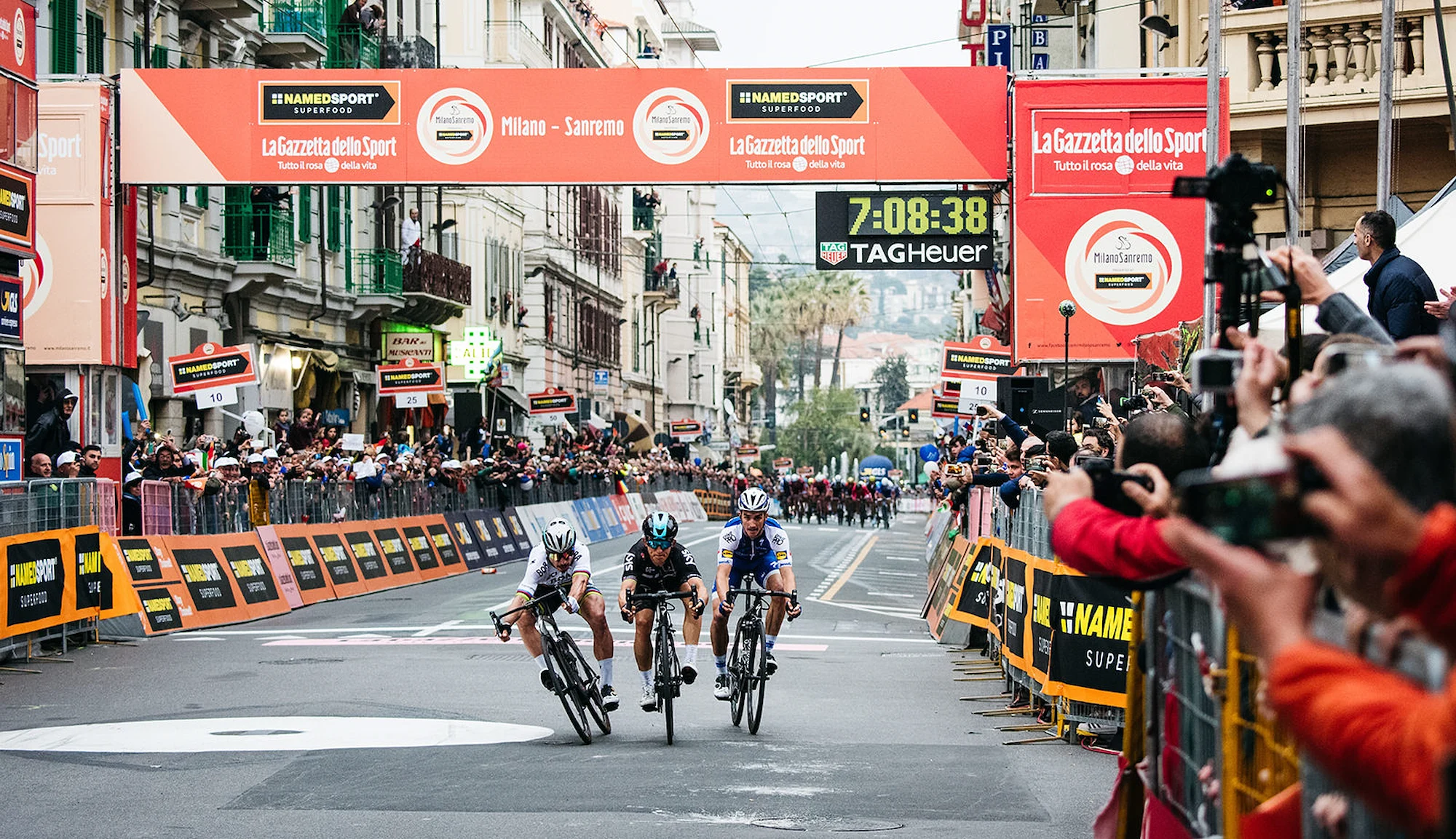
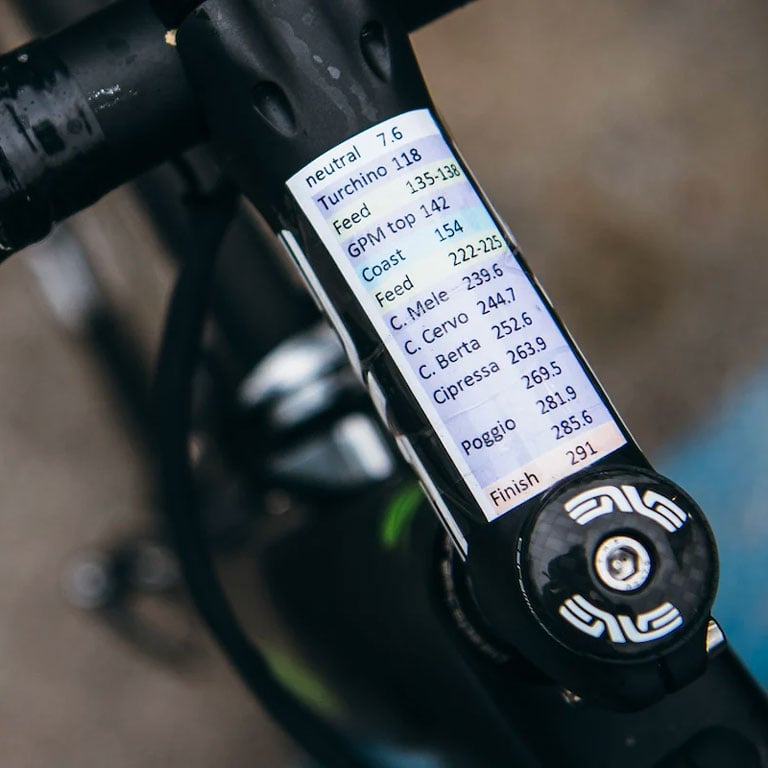
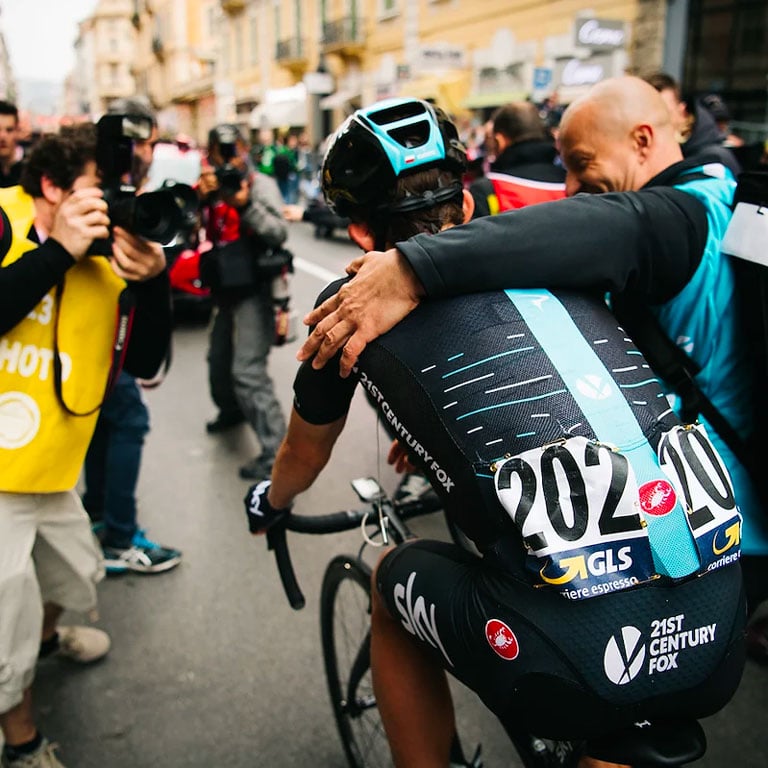
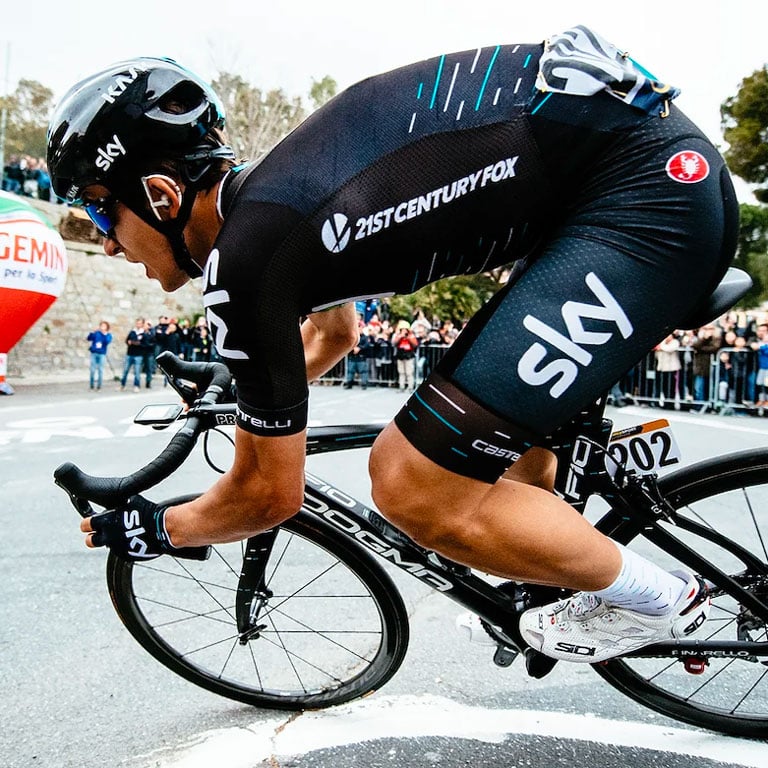
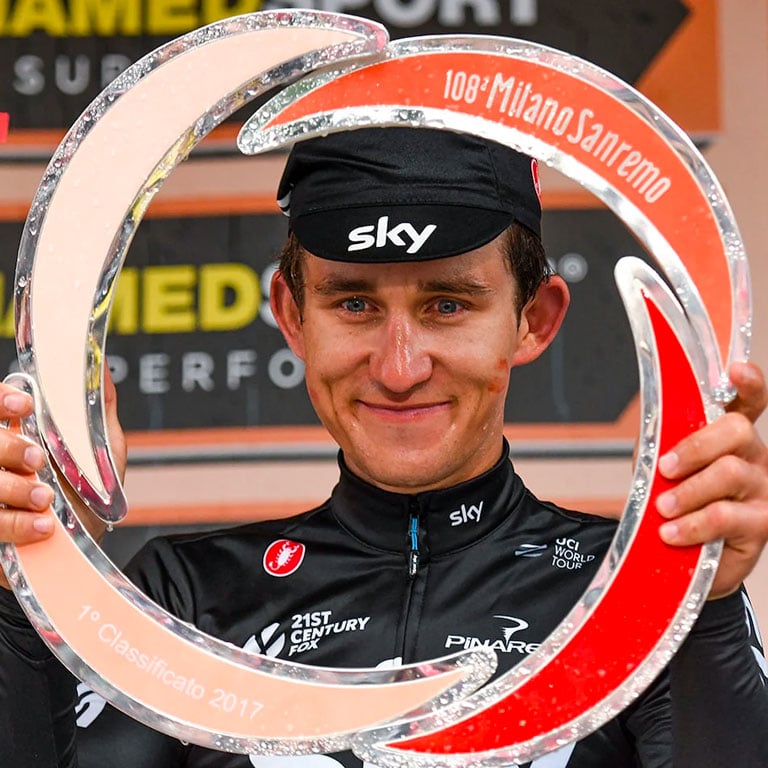
On a normal day, and almost any day, Peter Sagan was the top favorite in that sprint, but it was Kwiatkowski in a Sanremo Speedsuit who got the 2 centimeters (1 to even, 1 to win) that Haussler had so desperately needed all those years ago. Did the speed suit make the difference? We will obviously never know for sure, but we like to think so.
THE HARDEST DAY
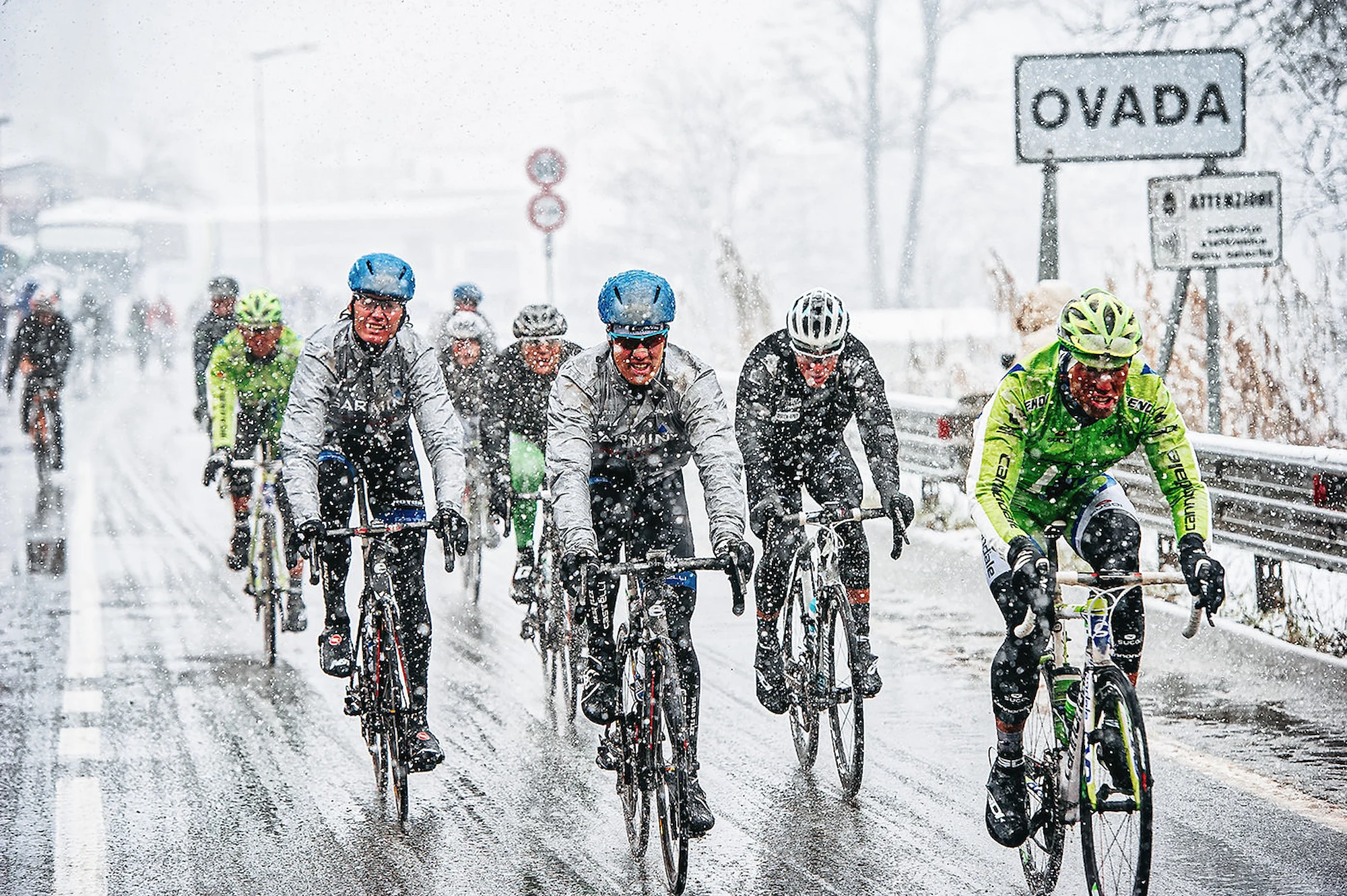
Heavy snow, freezing temperatures, and wet roads combined to make the worst scenario imaginable for a bike race of 300 kilometers.
Much like the way the speed suit has become a common sight amongst the world’s best, it’s tough to remember a time when the Gabba wasn’t a mainstay item for riders. Now, every team has this piece of clothing – in some version – as a staple for cold, wet weather.
We’re all familiar with the images from March 17, 2013: snow- and ice-covered riders, Robbie Hunter’s face stretched in a rictus of pain as he arrived at the bus, an AG2R rider helped off his bike by police and medics, and a smiling Edvald Boasson Hagen.
Milano-Sanremo did not look anything like the race of spring that year. Heavy snow, freezing temperatures, and wet roads combined to make the worst scenario imaginable for a bike race of 300 kilometers. In the midst of that misery, there was a notable sight – plain black jackets everywhere. It was the Gabba.
Much like the way the speed suit has become a common sight amongst the world’s best, it’s tough to remember a time when the Gabba wasn’t a mainstay item for riders. Now, every team has this piece of clothing – in some version – as a staple for cold, wet weather.
We’re all familiar with the images from March 17, 2013: snow- and ice-covered riders, Robbie Hunter’s face stretched in a rictus of pain as he arrived at the bus, an AG2R rider helped off his bike by police and medics, and a smiling Edvald Boasson Hagen.
Milano-Sanremo did not look anything like the race of spring that year. Heavy snow, freezing temperatures, and wet roads combined to make the worst scenario imaginable for a bike race of 300 kilometers. In the midst of that misery, there was a notable sight – plain black jackets everywhere. It was the Gabba.
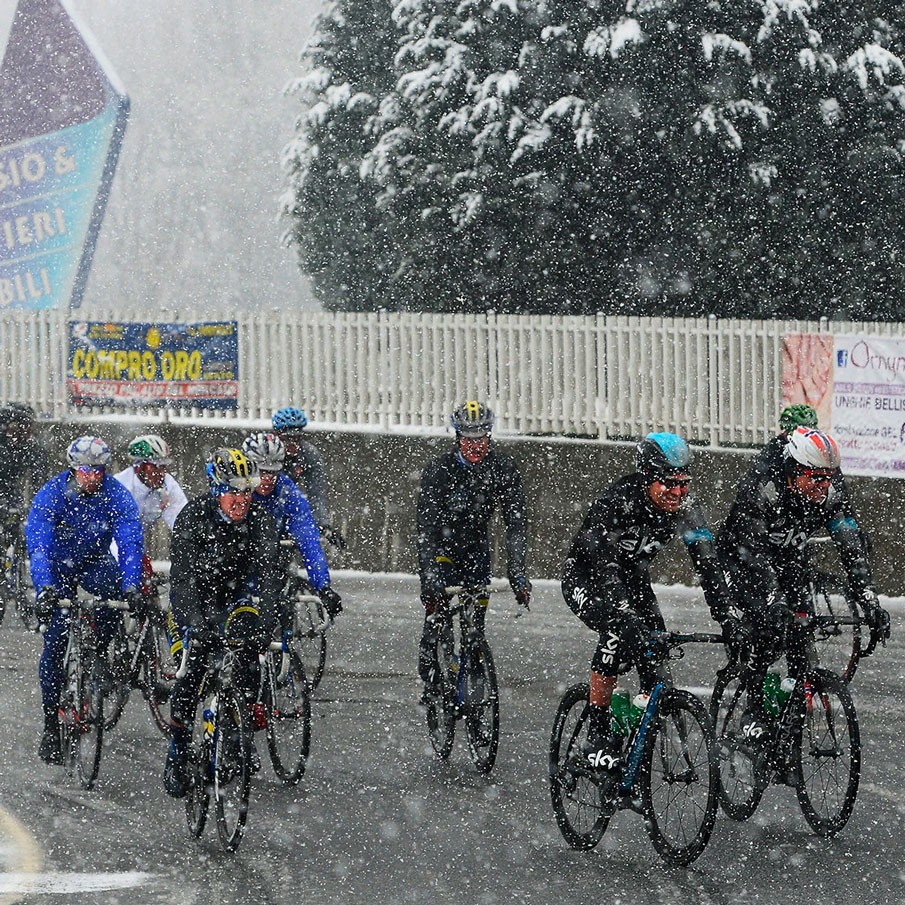
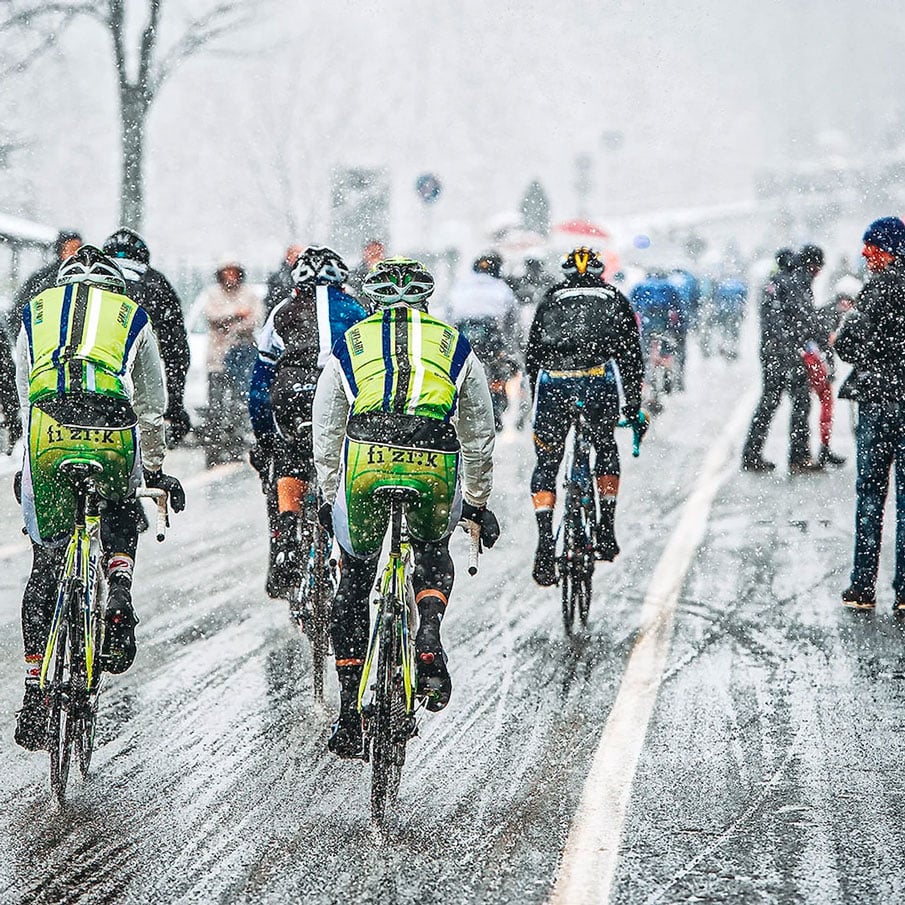
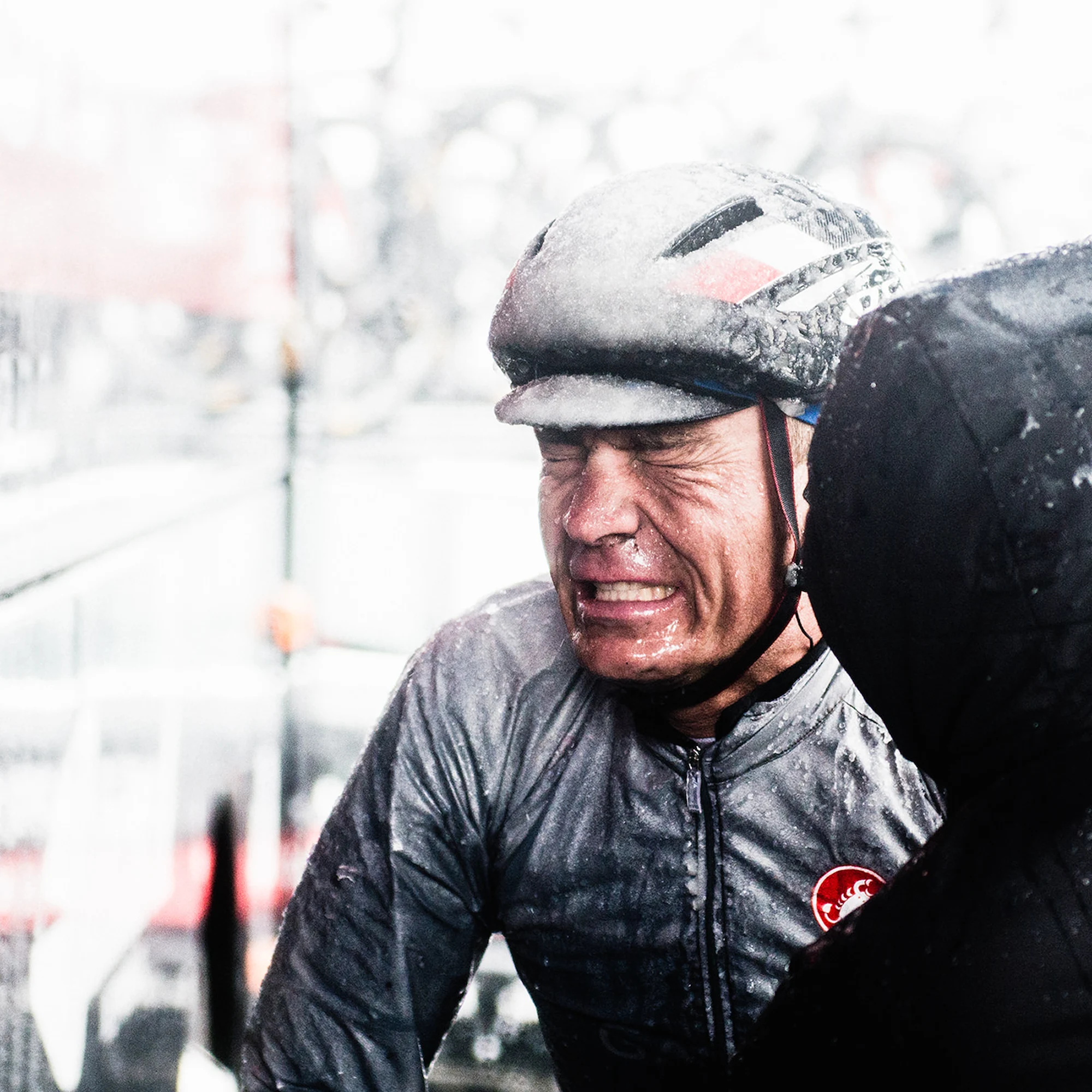
The night before this unforgettable edition of the race, it was clear the riders were in for the worst, so team after team lined up in hopes of getting some blacked-out Gabbas for the horror that awaited them the next day.
The Gabba was in its third season at that point, but it was when riders were faced with the worst of the worst, that the innovative new jacket exploded into view. Bad weather days would never look the same as the Gabba and the plethora of Gabba-like products proliferated both around the professional peloton and for everyone else.
The Gabba was in its third season at that point, but it was when riders were faced with the worst of the worst, that the innovative new jacket exploded into view. Bad weather days would never look the same as the Gabba and the plethora of Gabba-like products proliferated both around the professional peloton and for everyone else.
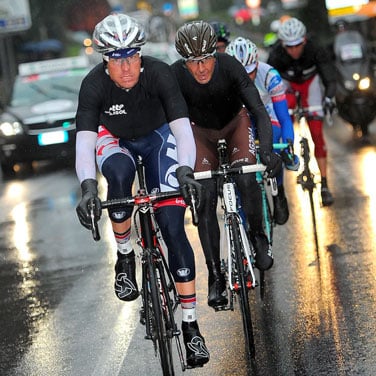
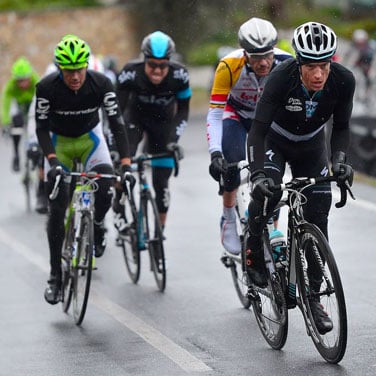
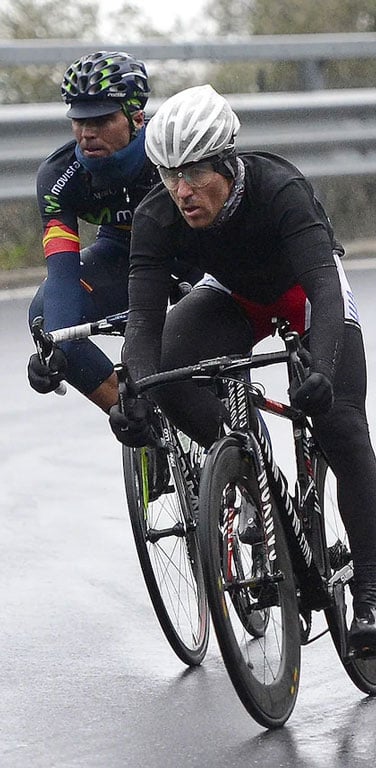
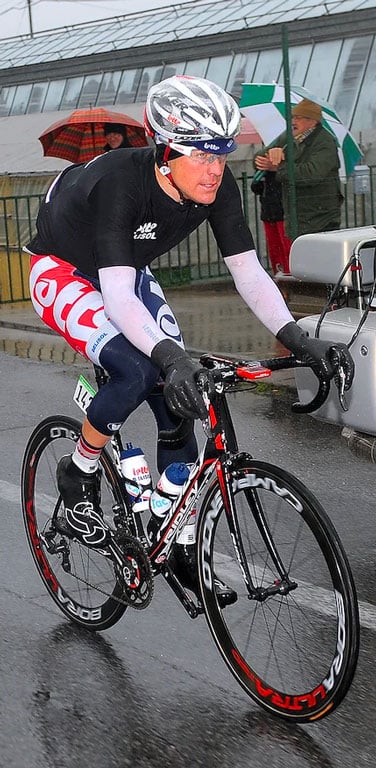
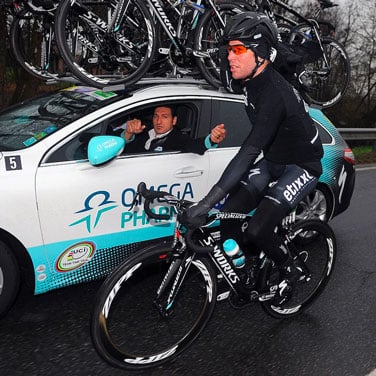
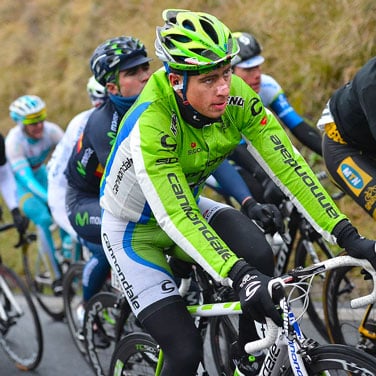
Rewind back to 2009: rain clothing was terrible. Full stop. Rain jackets were basically thick plastic bags with the aerodynamics of a four-person tent. Castelli met with the riders of the Cervélo TestTeam that year to work on improving this glaring weakness – in hopes of turning something terrible, into an actual performance advantage.
It was Gabriel Rasch who presented a homemade, aero rain jacket to Castelli that day. Rasch had stitched an old rain jacket smaller and tighter with pins. It was aero, “but I couldn’t breathe,” said Rasch.
It was Gabriel Rasch who presented a homemade, aero rain jacket to Castelli that day. Rasch had stitched an old rain jacket smaller and tighter with pins. It was aero, “but I couldn’t breathe,” said Rasch.
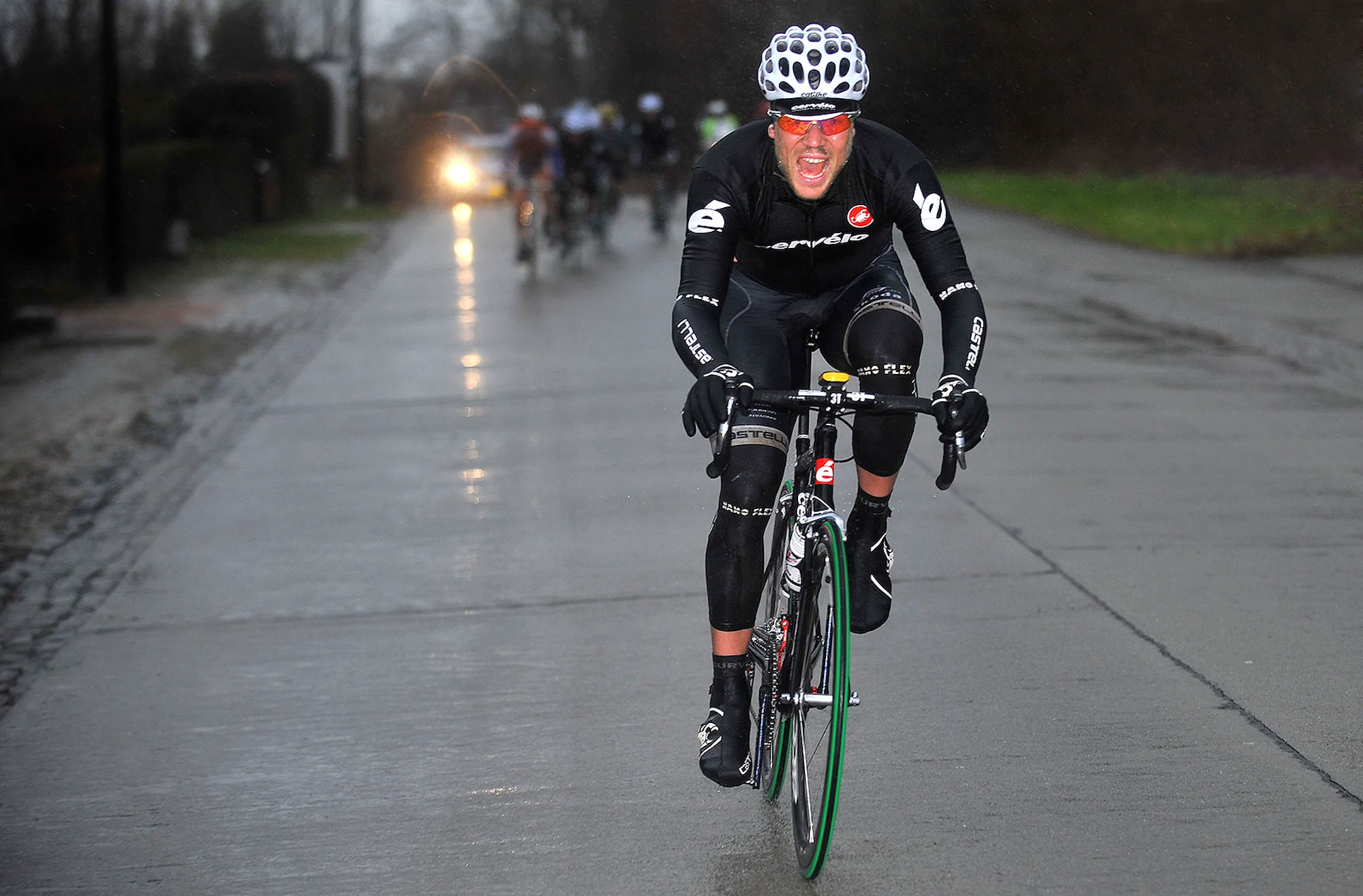
Castelli took these thoughts and Gabba’s rough draft, found a good material, worked its magic, and in February 2010, ahead of Opening Weekend in Belgium, presented the team with the first Gabba jacket.
One day after its race debut at Omloop Het Nieublad, riders had to face a bitter cold and wet edition of Kuurne-Brussels -Kuurne or the perfect race to put the Gabba through its paces. Speaking of memorable races, that edition of KBK (raced in horrific conditions with no bus transfer in the middle of the race) saw only 26 riders make it to the finish line. Cervélo TestTeam had three finishers, including two in the top six. Most teams had one; a few had two.
One day after its race debut at Omloop Het Nieublad, riders had to face a bitter cold and wet edition of Kuurne-Brussels -Kuurne or the perfect race to put the Gabba through its paces. Speaking of memorable races, that edition of KBK (raced in horrific conditions with no bus transfer in the middle of the race) saw only 26 riders make it to the finish line. Cervélo TestTeam had three finishers, including two in the top six. Most teams had one; a few had two.
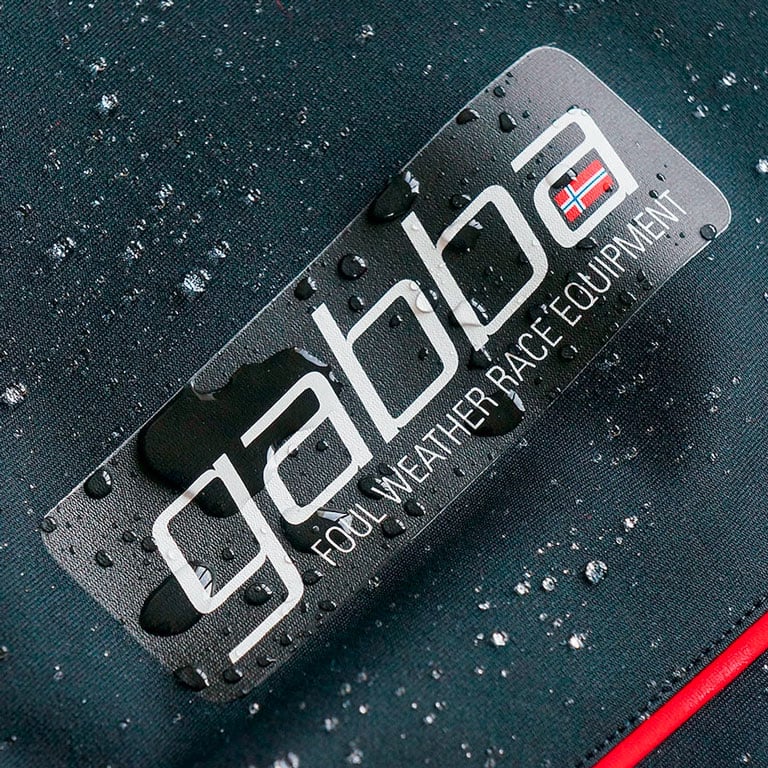
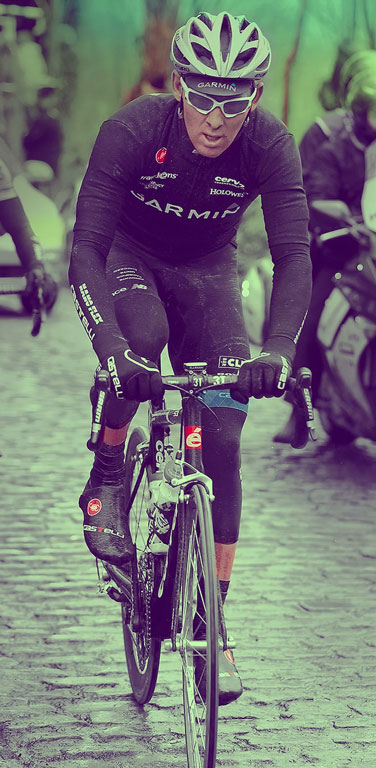

FOOTNOTES
Words by Ashley and Jered Gruber. Images: GruberImages, GettySport
Words by Ashley and Jered Gruber. Images: GruberImages, GettySport

